The only U.S. State outside of North America is situated about 3,200 kilometers (2,000 miles) from the mainland in the Pacific Ocean. Hawaii consists of 137 tropical and volcanic islands that span an area of 2,400 kilometers (1,500 miles).
This means that the state of Hawaii has the 4th-longest coastline in the United States. Beaches and other natural wonders make this one of the most popular tourist destinations in the country, regardless of its remote location.
Even though it’s one of the smallest and less populated states, it’s still the 13th-most densely populated. Most of the population lives on the island of O’ahu which is home to the state capital, Honolulu.
Let’s take a closer look at some of the most famous buildings in Hawaii so you can start making a bucket list for your visit to this amazing U.S. state.
1. Iolani Palace
Between the late 18th and late 19th centuries, the islands of Hawaii were ruled by the kings and queen (there was only 1) of the kingdom of Hawai’i.
One of the ruling dynasties, known as the House of Kamehameha, built an amazing palace in what is now downtown Honolulu, the state’s capital.
This structure is known as ʻIolani Palace and even though it was originally completed in 1879, it was completely restored and turned into a public museum in the year 1978.
The amazing palace is not only a National Historic Landmark but is also listed on the National Register of Historic Places.
This is not surprising because it’s the only former royal palace on US soil, quite amazing indeed!
An audio tour is available which allows you to learn all about how the final monarchs of the Kingdom of Hawai’i lived.
Official website: Iolani Palace
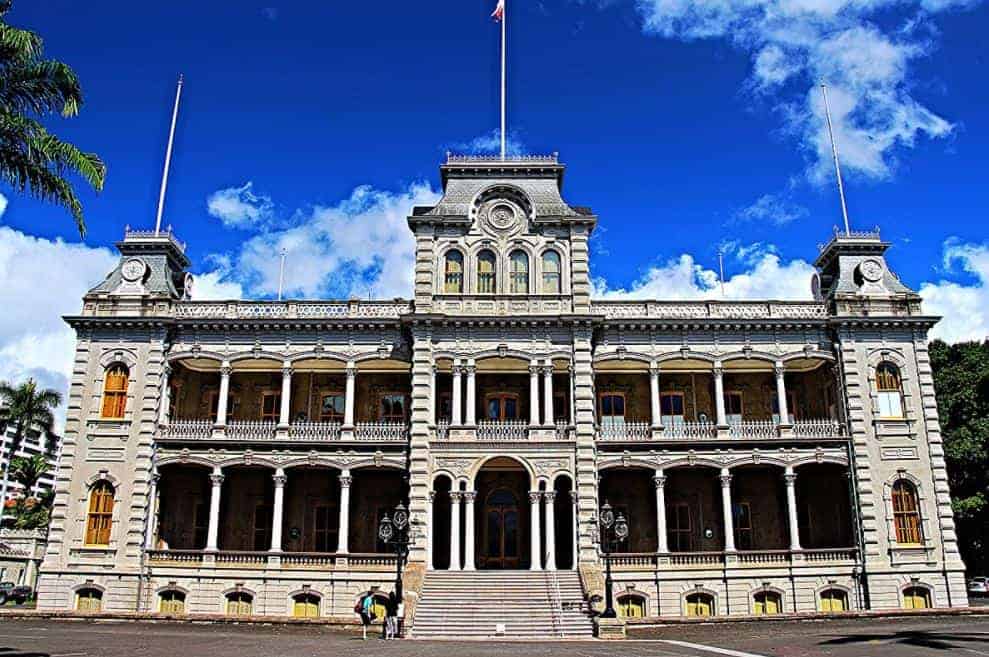
2. Bishop Museum
The Bernice Pauahi Bishop Museum was renamed Hawaiʻi State Museum of Natural and Cultural History, something that indicates what it’s all about.
It’s not only the largest museum of its kind in the state but also the largest museum in the world to learn about Polynesian history and culture.
The number of natural history specimens exceeds 24 million items so you’ll surely be able to spend quite a while inside the museum.
The museum was founded way back in 1889 and was named after the man who established it, Charles Reed Bishop (1822-1915).
The remarkable story about the founding of the museum is that Bishop was married to Bernice Pauahi Bishop (1831-1884), a princess and therefore a member of the royal family.
She passed a large number of items into Bishop after she died in 1884 and he established the museum to preserve these royal items.
Official website: Bishop Museum
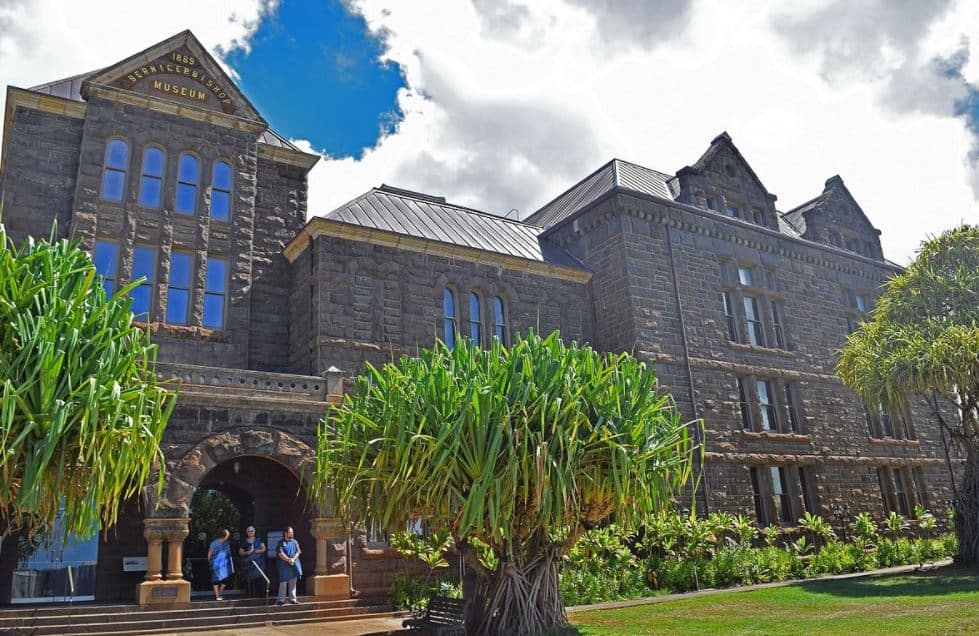
3. Kualoa Ranch
On the east coast of the island of O’ahu, we can find a ranch that serves a couple of different purposes.
Even though Kualoa Ranch is a tourist attraction, it’s a private nature reserve and an active ranch with working cattle as well.
It’s located about 24 miles (39 kilometers) north of Honolulu and is world-famous for a particular reason. That’s because it’s a popular filming location that has been used in 79 movies and television series to date.
To name just a few of the most popular, movies such as Jurassic Park (1993), Jumanji (1995), and Pearl Harbor (2001) were filmed here, as well as the popular American television series “Lost.”
Guided tours on horseback are available if you want to discover where some of the most famous movies in history were shot!
Official website: Kualoa Ranch
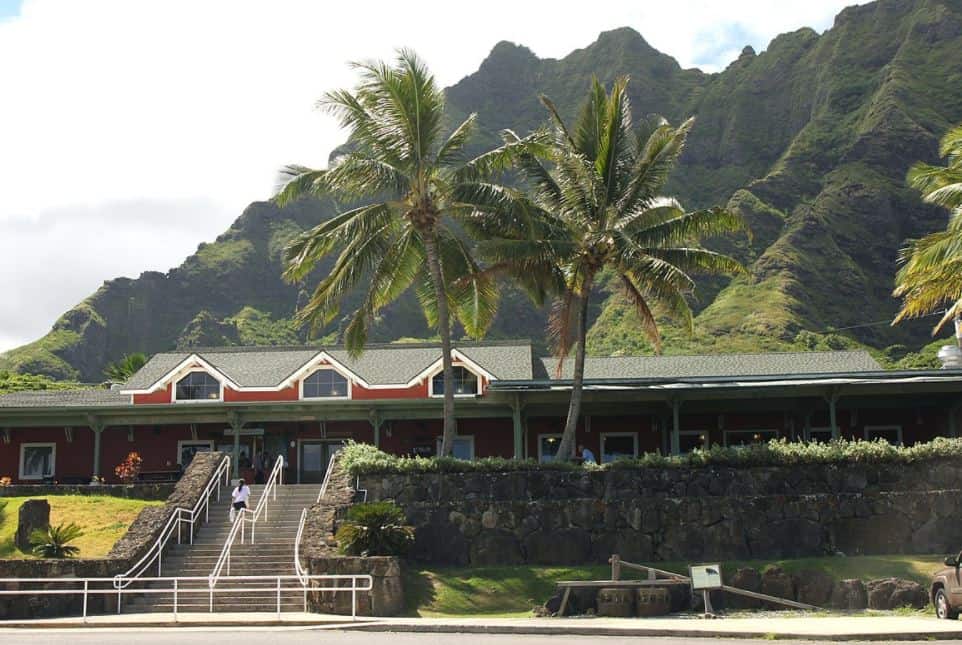
4. USS Arizona National Memorial
Pearl Harbor in Honolulu is world-famous for being the location of the devastating events that unfolded here during World War II.
Today, a memorial is located in this lagoon harbor on the exact location where 1,102 marines and sailors lost their lives during this horrible attack on a ship called the USS Arizona.
This event happened on December 7, 1941, and the memorial was built just over two decades later in 1962.
What’s remarkable about this memorial is that the sunken hull of the ship is located just beneath it, but the memorial itself doesn’t touch it.
It can only be accessed by boat and is a remarkable attraction to visit for multiple reasons.
Official website: Pearl Harbor National Memorial

5. Byodo-In Temple
Even though the Byodo-In Temple on the island of O’ahu is considered to be a Buddhist temple, it’s non-denominational because there isn’t an active congregation or monastic community.
That being said, this magnificent structure is a replica of a 900-year old temple in the city of Uji in the Kyoto Prefecture of Japan. This original temple was built in the late Heian Period.
The temple in Hawaii features the same traditional Japanese architecture and was dedicated in August of the year 1968. This was to celebrate the centennial of the arrival of the first Japanese immigrants to Hawaiʻi.
The main attraction inside the temple is a huge Lotus Buddha statue that stands 18 feet (5.5 meters) tall depicting Amitābha.
Apart from the building itself, the garden is equally magnificent. These Japanese gardens cover an area of 2 acres (0.81 ha) and feature multiple koi ponds. It’s also home to various types of birds, including sparrows and peafowl.
The temple in combination with the magnificent Hawaiian landscape makes this one of the most famous buildings in Hawaii.
Official website: Byodo-In Temple
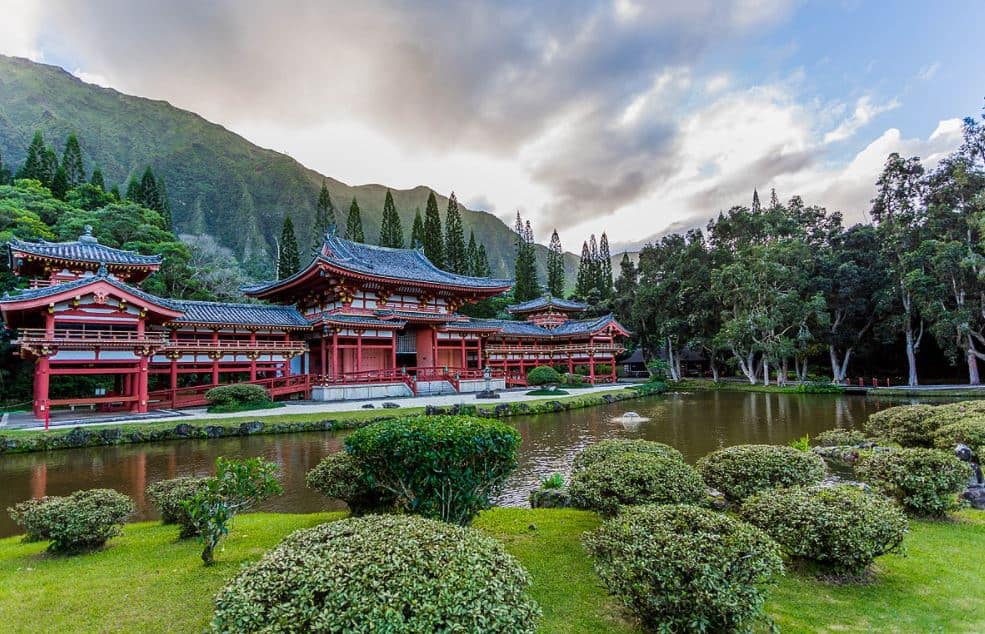
6. Pu’ukohola Heiau National Historic Site
The Unification of Hawaii happened in 1810 and this officially ended a period referred to as “Ancient Hawaii.”
Even though the first small settlements in Hawaii are estimated to have been built between 300 and 800 A.D., the structures built in the final period were a lot more quite impressive.
The ruin of one of the final major Ancient Hawaiian Temples has been turned into a National Historic Landmark and the entire site is known as the “Puʻukoholā Heiau National Historic Site.”
This massive temple was completed in 1791 and covers an area of 224 by 100 feet (68 by 30 meters).
Even though the attraction features a visitor center, it’s not possible to access the temple itself.
That’s because archaeological excavations are ongoing and it’s believed human remains are still buried at the site.
Official website: Pu’ukohola Heiau National Historic Site
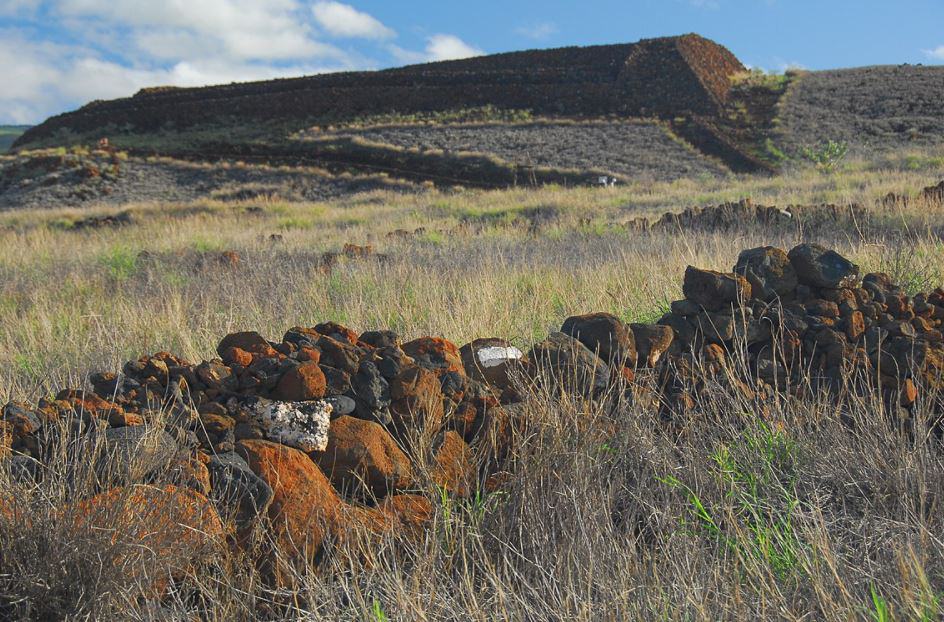
7. Kaloko-Honokōhau National Historical Park
If you want to see with your own eyes how native people on the island used to live, then you can head over the utmost western point of the Big Island of Hawai’i.
In the Kona District of the island, you’ll find the Kaloko-Honokōhau National Historical Park. This park was established in 1978 for a particular reason.
It’s an archaeological site that features a traditional native Hawaiian town known as the “Honokōhau Settlement.”
This features traditional housing, religious buildings, and the “ʻAiʻopio,” a fish pond with a sea wall that was used to catch fish.
It’s fair to conclude that you can learn a lot here about ancient Hawaiian culture.
Official website: Kaloko-Honokōhau
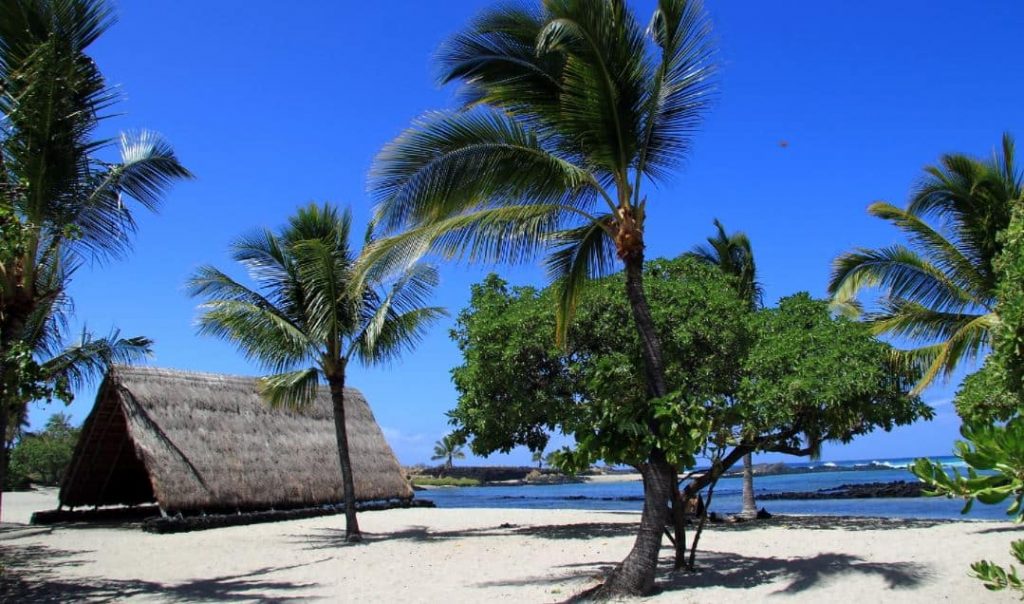
8. Makapuʻu Point Lighthouse
The utmost southeastern tip of the island of O’ahu is known as Makapuʻu Point. This is just a short drive east of the Koko Head Crater.
By the end of the 19th century, ocean traffic to Honolulu had increased so much that plans to build a lighthouse on this strategic location were made.
The Makapuʻu Point Lighthouse was eventually completed in the year 1909 and features the biggest lens of any lighthouse in the United States.
This remarkable lighthouse was added to the U.S. National Register of Historic Places in 1977.
The most popular way to explore this monument is by following the Makapuʻu Point Lighthouse Trail. This trail provides astounding views of the southeastern shore of O’ahu, as well as views of the Koko Head Crater.
Official website: Makapuʻu Point Lighthouse
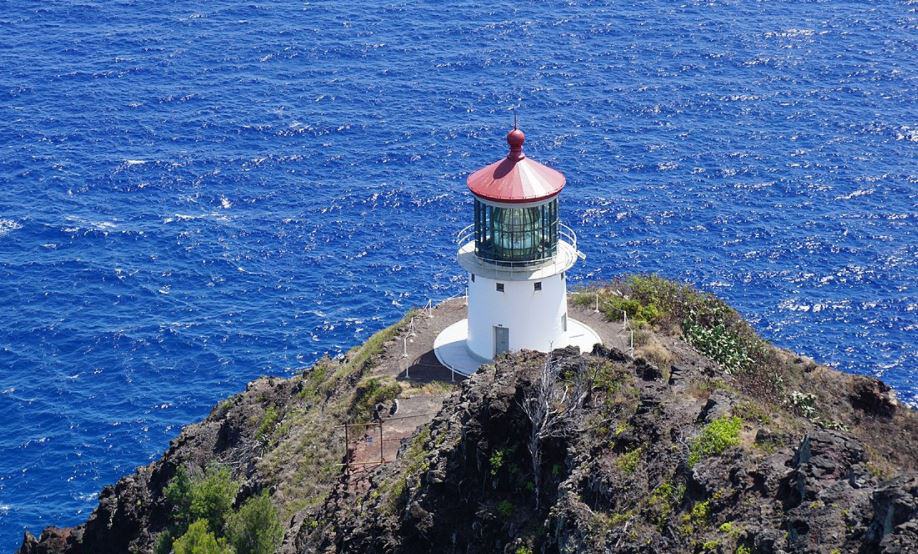
9. Honolulu Museum of Art
The largest art museum in Hawaii can be found in the state’s capital, Honolulu.
The Honolulu Museum of Art was established in 1927 and has been referred to as “the finest small museum in the United States.ˮ
Even though the museum started rather humble, its collection size has grown to over 50,000 items and it has one of the largest collections of Asian and Pan-Pacific art in the country.
Apart from featuring traditional Hawaiian art, it also features international works by some of the greatest artists in history.
These include artworks by Pablo Picasso, Vincent van Gogh, Edgar Degas, and Claude Monet, to name just a few famous European artists whose works are on public display at the museum.
Official website: Honolulu Museum of Art

10. Hawaii State Capitol
The Hawaii State Capitol is the official seat of the Government of the U.S. State of Hawaii. It’s home to all the most important offices of government agencies and also the principal building of the Governor of Hawaii and Lieutenant Governor of Hawaii.
The building was commissioned by John A. Burns (1909-1975, the second Governor of Hawaii between 1962 and 1974, and was completed between 1965 and 1969.
The Capitol can be found in downtown Honolulu and was designed in the local variation of the Bauhaus architectural style called “Hawaiian international architecture.” It’s surrounded by a reflecting pool, a metaphor of the Pacific Ocean where the Hawaiian archipelago is located.
This is just one of many elements that symbolize Hawaii. Others include the palm tree-shaped columns that surround the building and the cone-shaped legislative chambers that represent the volcanoes that formed the islands.
Official website: Hawaii State Capitol



